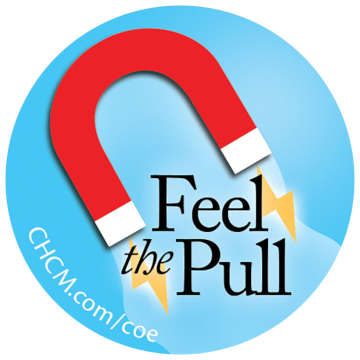By Gen Guanci, MEd, RN-BC, CCRN-K
I get asked this question, or some version of it, frequently: “Is a Magnet® journey really worth the time, money, and stress it takes to be successful?” Without any reservation, I can honestly say YES! My journey to Magnet® was not as an early adopter. In the early 2000s, my CNO announced at a Director’s meeting that we “had applied for Magnet®…and wasn’t that great!”
At that time I had never heard of Magnet®. Of course, everyone in the room agreed with her as we knew it could be career limiting if we did not. But the meeting after the meeting was a different story. My comments to colleagues showed my resistance and were not supportive of this so-called journey we were forced to be on. First, I had no clue what Magnet® was—never mind how much work it might take. I didn’t care about the answers to these questions as I already had too much work to do and so did everyone else.
Empowering employees creates enthusiasm and engagement
Ironically, despite my not-entirely-secret reservations, I was tapped to co-lead the Magnet® Champion group. This was the group of staff who would be the eyes, ears, and voice of Magnet® at our hospital. It was only when I saw how excited the champions were about being empowered in the workplace, finally having a voice in decision-making, owning their practice; evolving into professionals, and being able to practice with increased autonomy, did I finally “drink the Kool-Aid.” Since that time I have gone on to support organizations as a consultant as they take their initial designation journey or redesignation journey.
There is no doubt that a Magnet® journey costs organizations money. Costs can include those associated with the operationalization of professional practice structures and processes including shared decision- making structures, Magnet®-related education, outcome benchmarking database fees, and the fees associated with an application, document review, and site visits.
Value Proposition for Magnet®
But Magnet® expenses are far from being “money out the window. To offset these expenses, take a look at the potential cost savings associated with decreased vacancy rates. Current industry average to replace a bedside nurse is running around 75% of their annual salary. This figure doesn’t even include the costs to cover that vacancy such as overtime and agency usage. Depending upon salaries in your area, the costs associated with Magnet® Designation could be saved on the backend pretty quickly if you were able to decrease your vacancy rate by 10%. This type of double-digit decrease is common for Magnet® designated organizations.
Magnet® organizations also see decreased adverse patient outcomes such as hospital-acquired pressure ulcers (HAPU), falls, central line bloodstream infections, etc. According to research, one patient fall can
add approximately $34,000 to a hospitalization cost. Now imagine if your organization decreased its annual falls by 10…that could be a potential savings of $340,000!
Some ask why it wouldn’t be smarter to just put this money into increasing staffing. Staffing alone does not ensure better patient outcomes. Ownership of data by direct care nurses, as well as RN education levels, has proven to improve patient satisfaction as well as nurse-sensitive outcomes. It is a healthy work environment, fostered by a Magnet® journey, which has been proven to improve patient outcomes.
Nurses for years have said we are a profession, and for this blogger, the Magnet® journey has helped raise the level of RN professionalism in every organization I’ve worked with.
So what do you think? Is Magnet® worth it?




